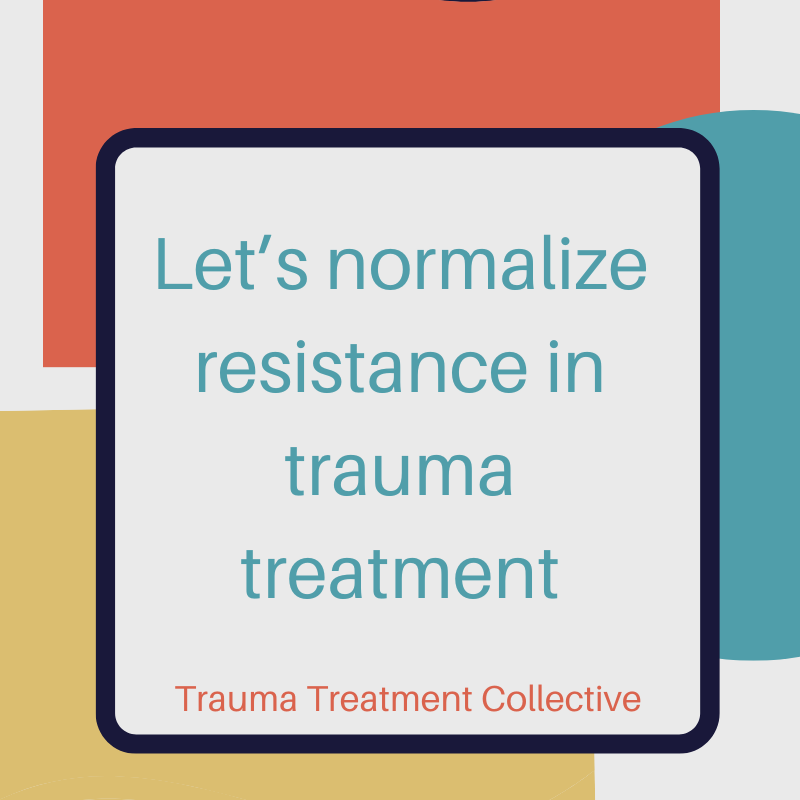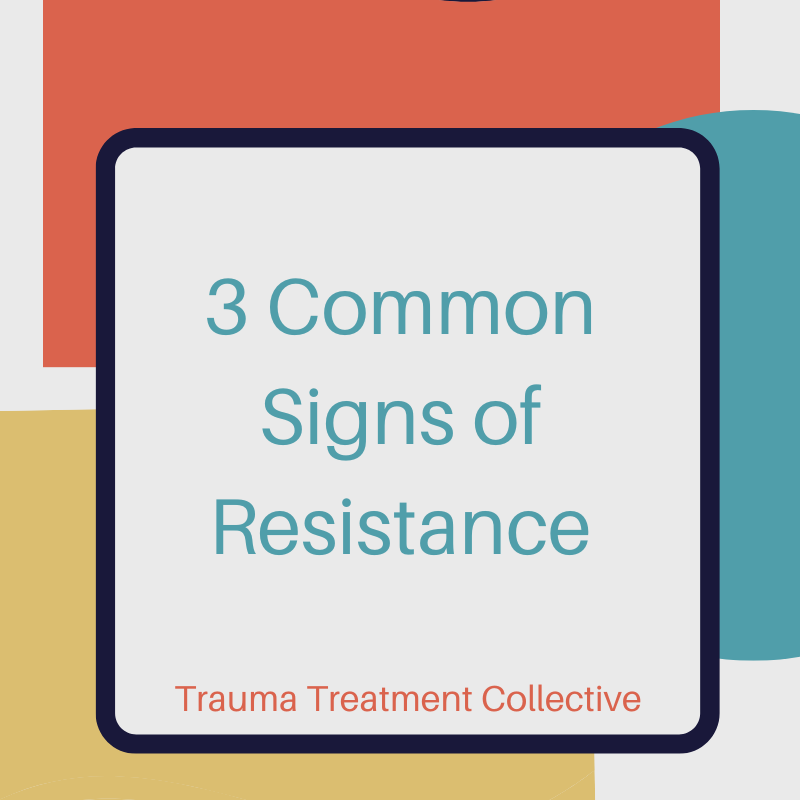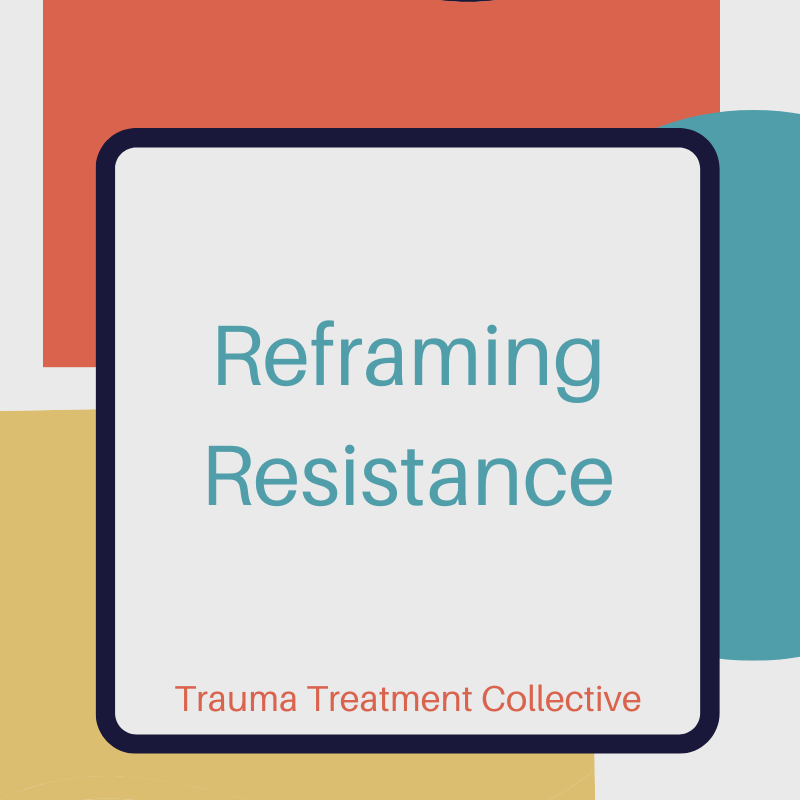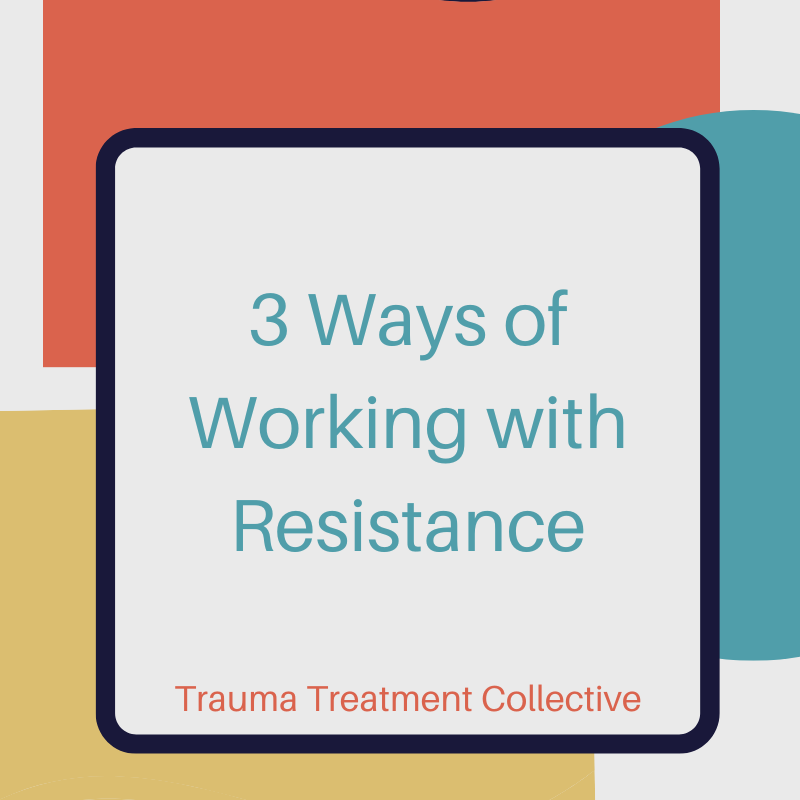
Expecting clients to struggle with resistance is probably a good idea in trauma treatment, and learning to reframe your client’s resistance can be very helpful in the treatment process. Once you are able to see resistance as a part of the process, you are then able to use it in the treatment process. Learning to understand what a client’s resistance is speaking to can give you greater attunement to your client, which helps in communicating safety in the healing process.
Let’s start with ways to normalize the client’s resistance. Two of my favorite ways are predicting it before it shows up and taking time to welcome it into our space when it shows up. When I use the intervention of predicting the resistance, I try to have a conversation with my client somewhere in the first 4 sessions where I provide the client with psychoeducation about defense response, resistance, and trauma. I prep them for when it shows up. I also may spend time overtly welcoming it too. This helps with reducing the shame as well as helping clients to work openly with the resistance in order to move through it.

Now let’s explore some common signs that a client might be showing signs of resistance. The first one that comes to mind is not showing up for sessions. You may have had a client like this, where “all of a sudden” they start rescheduling sessions or not showing up. When this starts to happen, I immediately wonder if a client is struggling with resistance. Another way of thinking about this response is in the form of a “stuck on flee” response.
Another common sign that resistance has entered the treatment space is a client struggling with frustration or anger in session that is either directed towards you as the treatment professional or towards the interventions you are offering in the healing process. They may say things like, “I tried that and it didn’t work”, or “this is stupid and I don’t understand what you are asking me to do.” They also may attack your skill set by saying something like, “I thought you were here to help me, I don’t feel better.” Behaviors like these could also be seen as a client struggling with resistance. Another way of thinking about this response is in the form of a “stuck on fight” response.
We can’t talk about signs without mentioning the common sign of immobility. This particular sign can show up in a client’s lack of engagement in skill development inside or outside sessions or may be a consistent position of not knowing how anything connects or relates. They may be a client that uses the statement “I don’t know” a lot. Another way of thinking about this resistance is a “stuck on freeze” response.

As you can see with each of these common presentations of resistance, I’ve reframed the resistance in the context of a “stuck on defense” response. Resistance can be seen as a negative, but in the context of trauma treatment, it is an adaptation in an attempt to feel safe. I encourage you to see it as just that… an attempt to stay safe and the very thing that has helped your client make it to this point in their life (or maybe the thing they didn’t get to do in the midst of their traumatic experience(s) that is still unprocessed in their systems).
When I view resistance in one of these ways, it helps me understand and connect with my clients in a deeper way. I will go as far as to “welcome it into the room” and honor the resistance for the work it has done thus far in my client’s life by either protecting them or letting them know that there is still work to be done.

When I think about working with a client’s resistance, there are three things that come to mind that I would like you to consider.
1. Attachment styles
Having a clear understanding of attachment styles is vital to understanding what is truly happening within the therapeutic relationship. Considering your clients’ attachment adaptation can give greater insight into why a client may be struggling with resistance. For example, if a client has more of an avoidant attachment adaptation, then when they get overwhelmed or stressed, they may have a tendency to pull away from your support and be more combative to any intervention that would put them in a place of receiving support from another person.
2. Safety
Assessing a client’s sense of safety in the relationship, and with the level of work that is being done, is also very helpful. We all have the automatic response of protecting ourselves when we don’t feel safe, so it makes sense to assess safety when we encounter resistance from a client. It could be a signal from their system to adjust the pace of the work. This is also a good time to normalize resistance in trauma treatment. It might help clients to make sense of how they are feeling, which can be helpful for them moving through the resistance more easily.
3. Completion of defense responses
As mentioned earlier, resistance can easily be seen as a “stuck on defense” response, so helping clients to complete these “stuck on defense” responses may be a missing piece to moving through the resistance. For example, if a client has a “stuck on defense” response in the area of fight and they are constantly argumentative or frustrated in the treatment process, helping to externalize that fight energy and providing the client with psychoeducation about the fight response can be helpful as well as providing the client with some healthy and safe ways to express their aggression. One of my favorites is using imagery and animal work. This is as simple as the client imagining a fierce animal and embodying that animal as that animal expresses their fight energy. This can be a safe and acceptable way for the client to feel the energy and express it.
Overall resistance is a normal part of the trauma treatment process, so when you encounter it, don’t get sidetracked by it. Rather, determine what the resistance is trying to communicate to you, embrace it, and make it a part of the treatment process.

